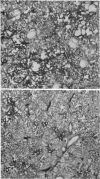Abstract
Bronchograms were performed using finely particulate lead on emphysematous lungs obtained at necropsy. X-ray films were taken of these lungs at distending pressures of 0, 5, 10, and 20 cm H2O. The volumes of individual centrilobular emphysematous spaces were calculated at each distending pressure from measurements made on these bronchograms and pressure-volume curves were constructed for each space. The pressure-volume characteristics of seven normal lungs and one lung with centrilobular emphysema was also measured. The normal lungs, the lung with centrilobular emphysema, and the centrilobular emphysematous spaces were compared by expressing the volume of air contained in them at each distending pressure as a per cent of the volume contained at 20 cm H2O distending pressure. We conclude that centrilobular emphysematous spaces have a high residual volume, are less compliant than normal lung tissue, and are much less compliant than the emphysematous lungs which contain them. Furthermore, these spaces undergo little volume change in the tidal breathing range and probably add a relatively nondistensible series dead space to the surrounding lung parenchyma.
Full text
PDF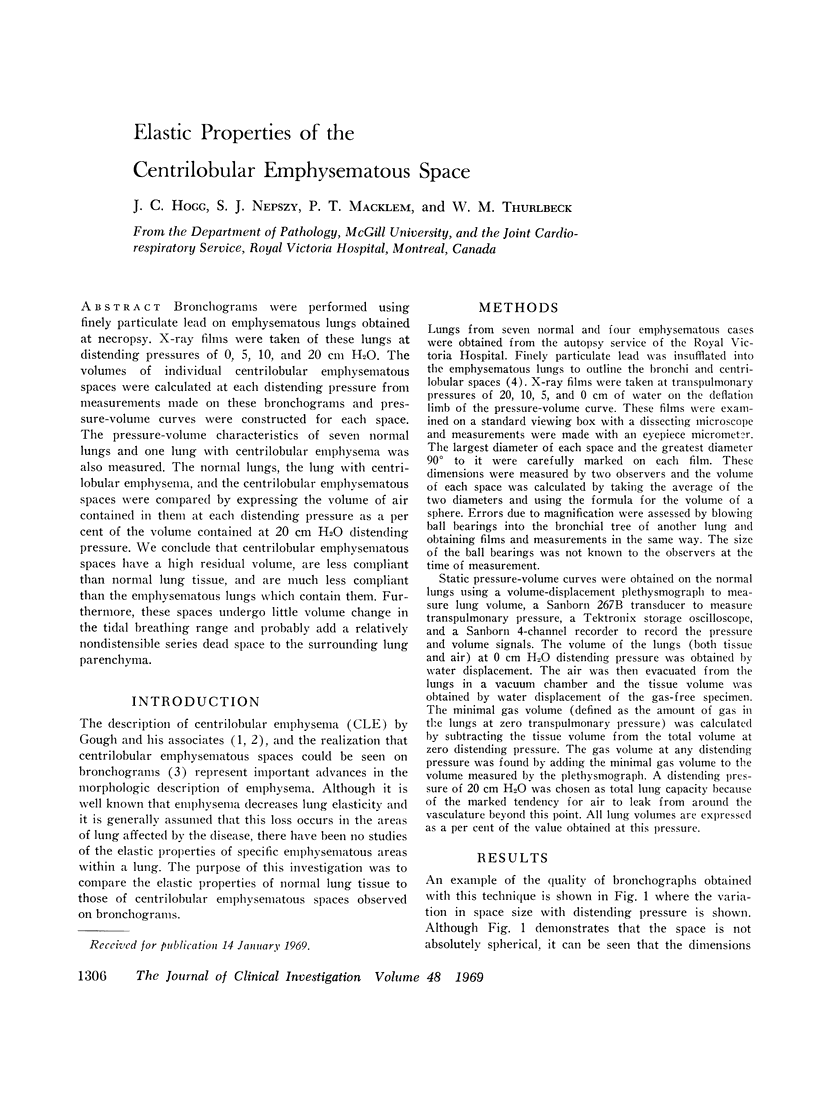
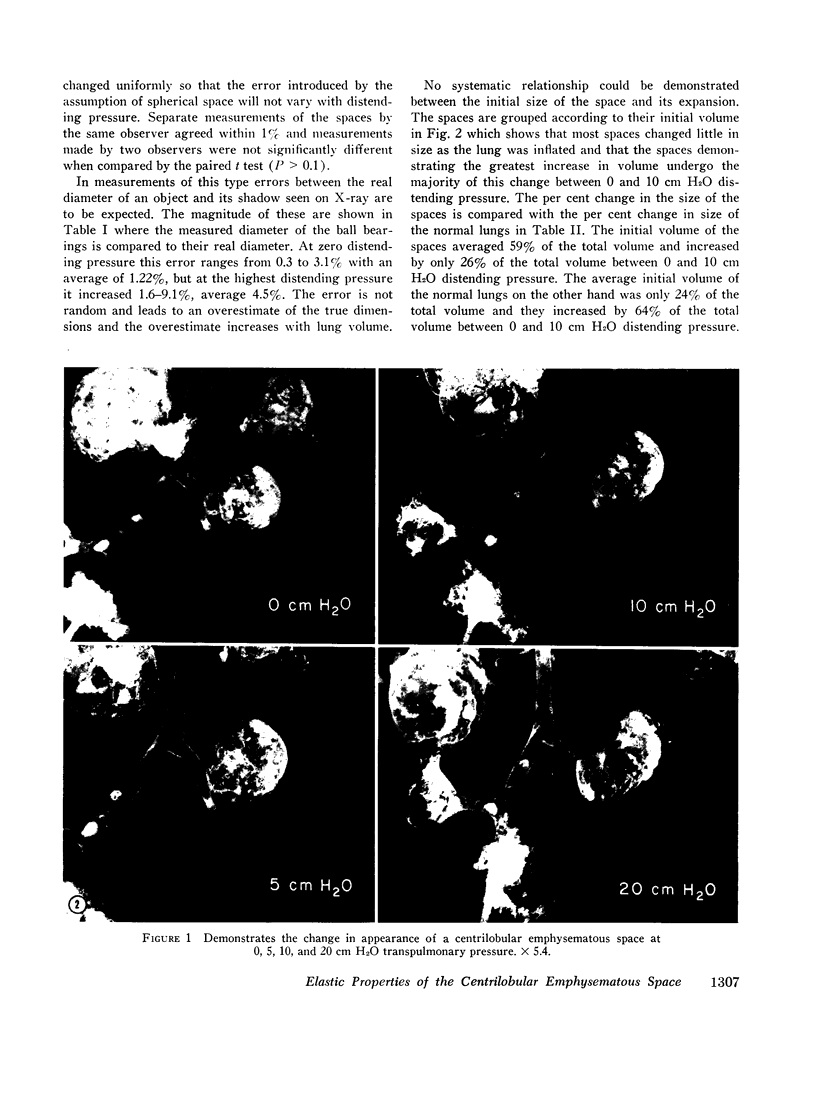
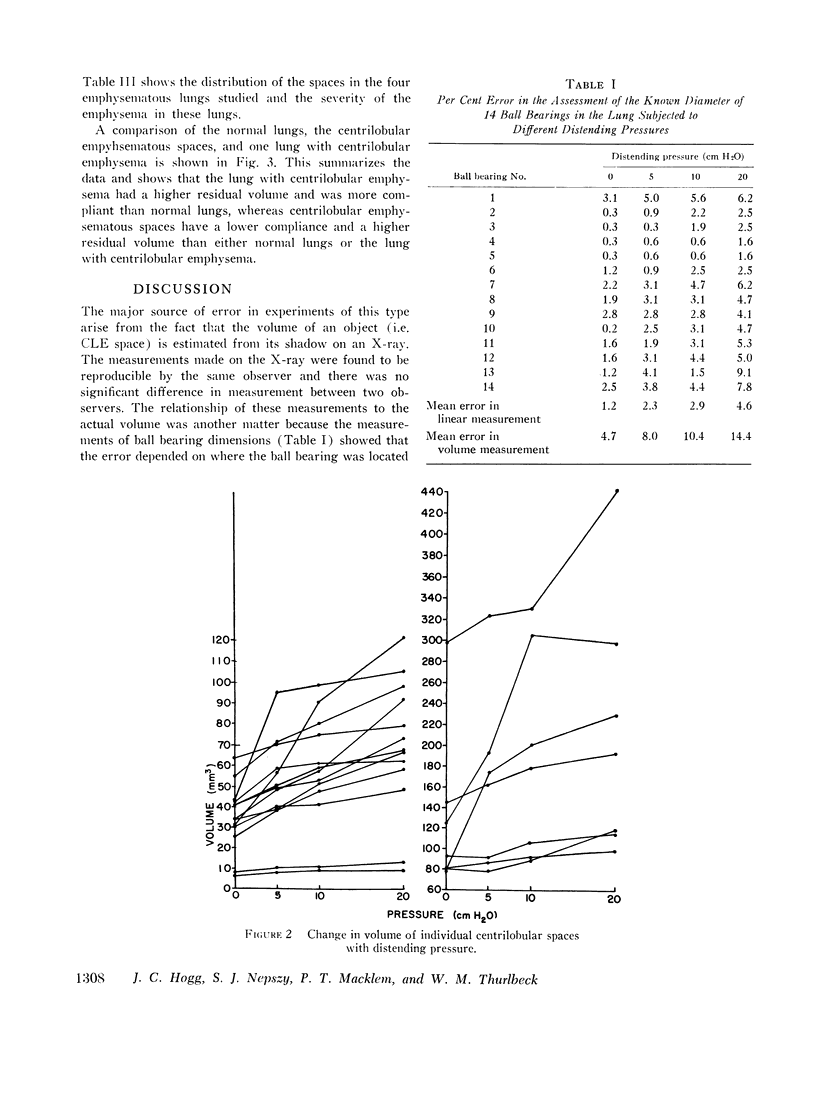
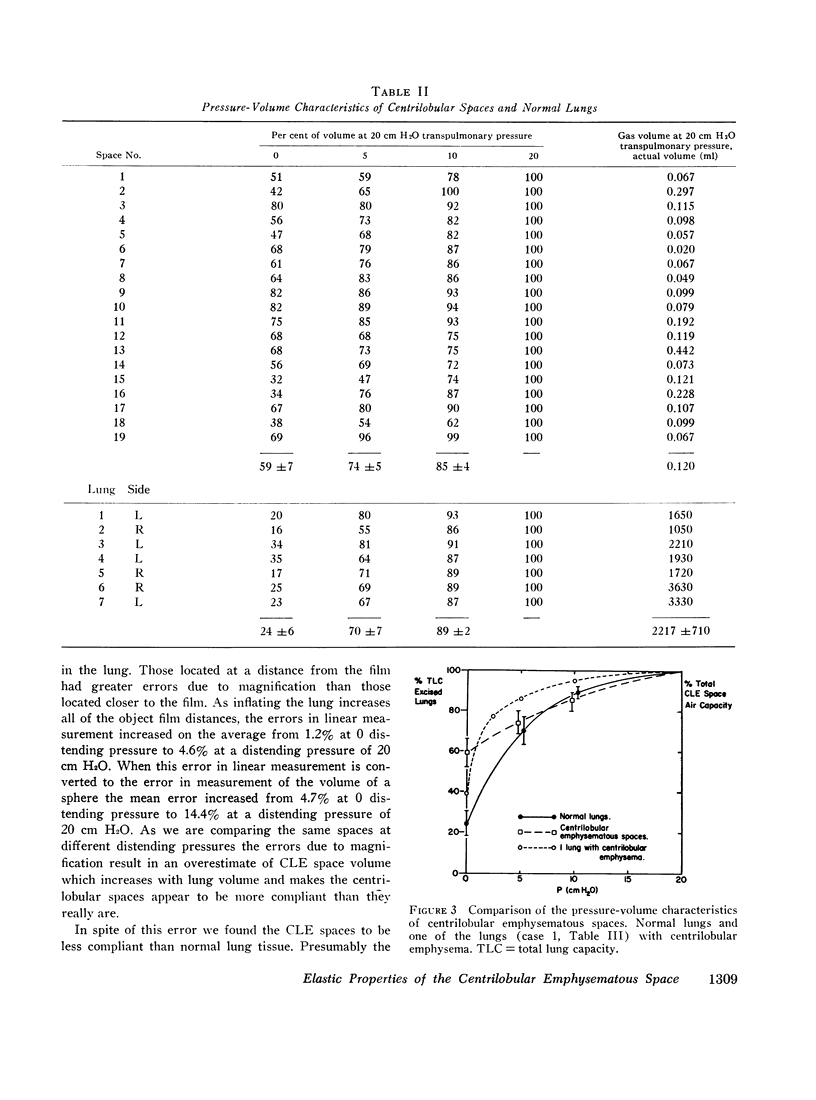
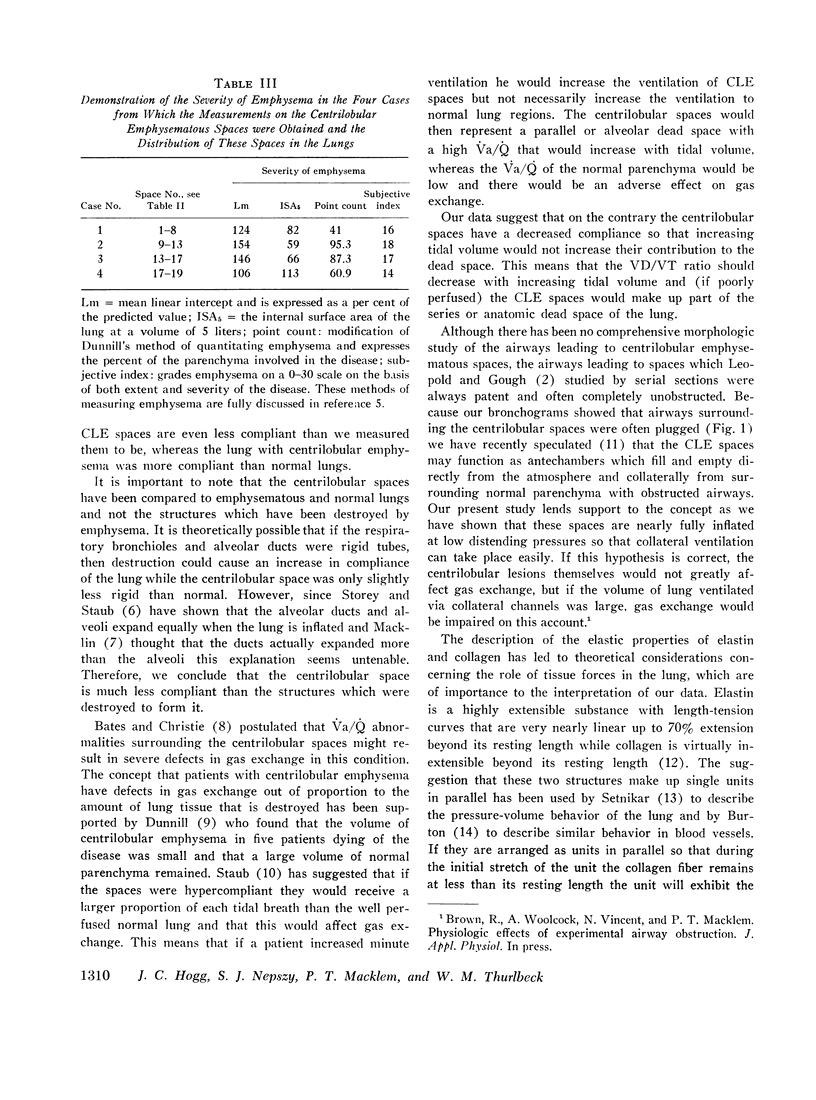
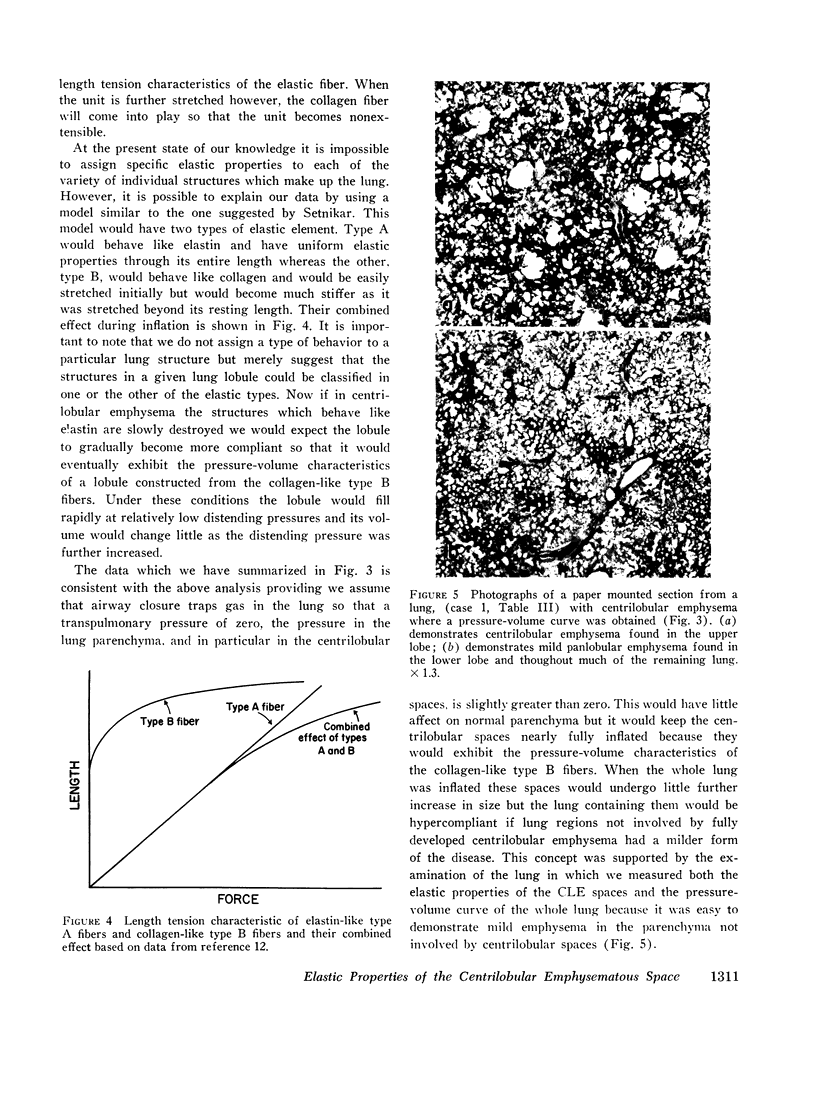
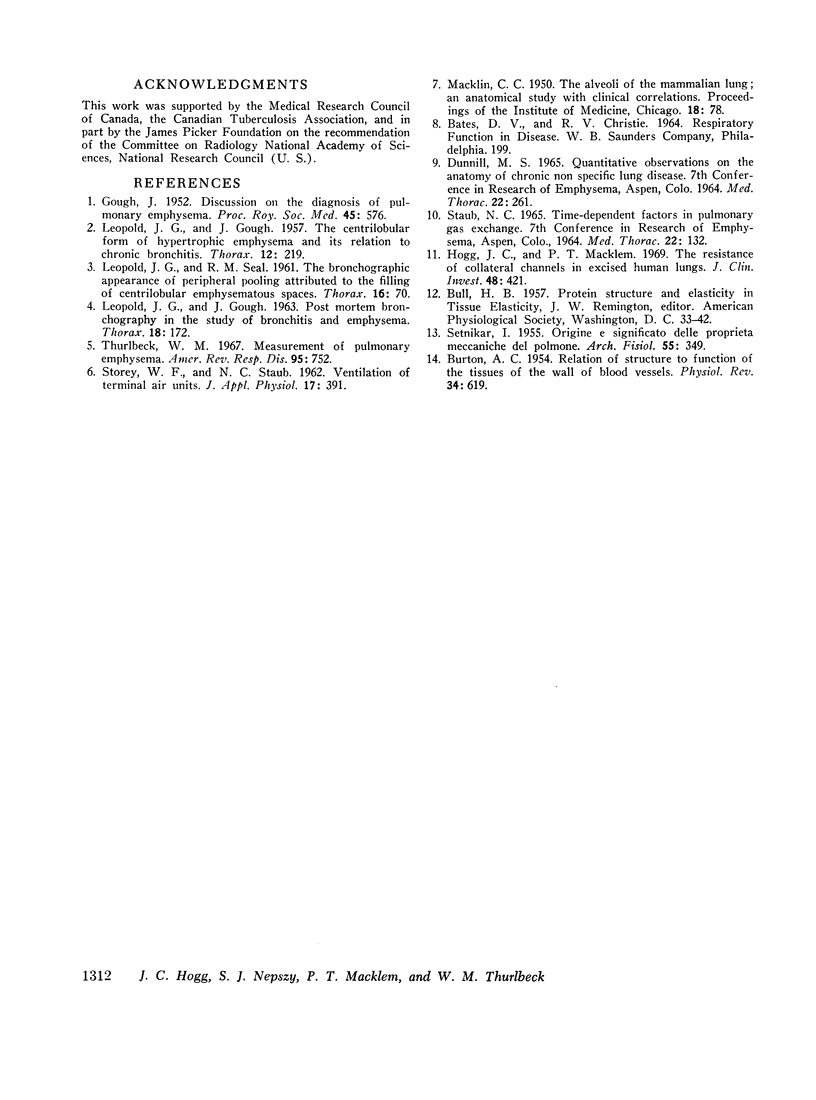
Images in this article
Selected References
These references are in PubMed. This may not be the complete list of references from this article.
- BURTON A. C. Relation of structure to function of the tissues of the wall of blood vessels. Physiol Rev. 1954 Oct;34(4):619–642. doi: 10.1152/physrev.1954.34.4.619. [DOI] [PubMed] [Google Scholar]
- DUNNILL M. S. QUANTITATIVE OBSERVATIONS ON THE ANATOMY OF CHRONIC NON-SPECIFIC LUNG DISEASE. Med Thorac. 1965;22:261–274. [PubMed] [Google Scholar]
- GOUGH J. The pathological diagnosis of emphysema. Proc R Soc Med. 1952 Sep;45(9):576–577. [PMC free article] [PubMed] [Google Scholar]
- Hogg J. C., Macklem P. T., Thurlbeck W. M. The resistance of collateral channels in excised human lungs. J Clin Invest. 1969 Mar;48(3):421–431. doi: 10.1172/JCI105999. [DOI] [PMC free article] [PubMed] [Google Scholar]
- LEOPOLD J. G., GOUGH J. The centrilobular form of hypertrophic emphysema and its relation to chronic bronchitis. Thorax. 1957 Sep;12(3):219–235. doi: 10.1136/thx.12.3.219. [DOI] [PMC free article] [PubMed] [Google Scholar]
- LEOPOLD J. G., SEAL R. M. The bronchographic appearance of "peripheral pooling" attributed to the filling of centrilobular emphysematous spaces. Thorax. 1961 Mar;16:70–77. doi: 10.1136/thx.16.1.70. [DOI] [PMC free article] [PubMed] [Google Scholar]
- SETNIKAR I. Origine e significato delle proprietá meccaniche del polmone. Arch Fisiol. 1955 Dec 30;55(4):349–374. [PubMed] [Google Scholar]
- STAUB N. C. TIME-DEPENDENT FACTORS IN PULMONARY GAS EXCHANGE. Med Thorac. 1965;22:132–145. [PubMed] [Google Scholar]
- STOREY W. F., STAUB N. C. Ventilation of terminal air units. J Appl Physiol. 1962 May;17:391–397. doi: 10.1152/jappl.1962.17.3.391. [DOI] [PubMed] [Google Scholar]
- Thurlbeck W. M. Measurement of pulmonary emphysema. Am Rev Respir Dis. 1967 May;95(5):752–764. doi: 10.1164/arrd.1967.95.5.752. [DOI] [PubMed] [Google Scholar]




